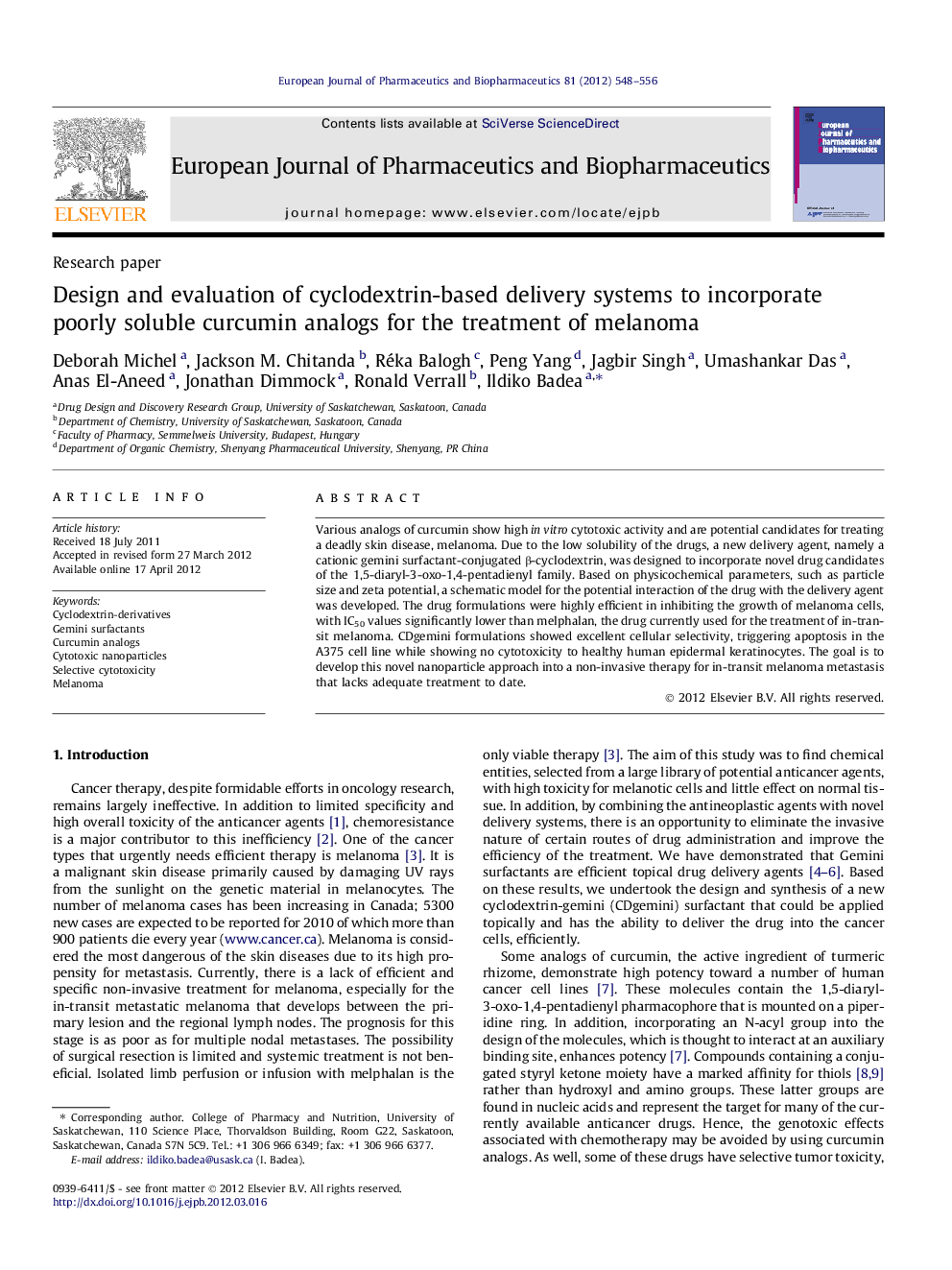| Article ID | Journal | Published Year | Pages | File Type |
|---|---|---|---|---|
| 2083948 | European Journal of Pharmaceutics and Biopharmaceutics | 2012 | 9 Pages |
Various analogs of curcumin show high in vitro cytotoxic activity and are potential candidates for treating a deadly skin disease, melanoma. Due to the low solubility of the drugs, a new delivery agent, namely a cationic gemini surfactant-conjugated β-cyclodextrin, was designed to incorporate novel drug candidates of the 1,5-diaryl-3-oxo-1,4-pentadienyl family. Based on physicochemical parameters, such as particle size and zeta potential, a schematic model for the potential interaction of the drug with the delivery agent was developed. The drug formulations were highly efficient in inhibiting the growth of melanoma cells, with IC50 values significantly lower than melphalan, the drug currently used for the treatment of in-transit melanoma. CDgemini formulations showed excellent cellular selectivity, triggering apoptosis in the A375 cell line while showing no cytotoxicity to healthy human epidermal keratinocytes. The goal is to develop this novel nanoparticle approach into a non-invasive therapy for in-transit melanoma metastasis that lacks adequate treatment to date.
Graphical abstractSchematic representation of the assembly of drug/CDgemini (A) and drug/CD (B) particles.Figure optionsDownload full-size imageDownload high-quality image (150 K)Download as PowerPoint slide
